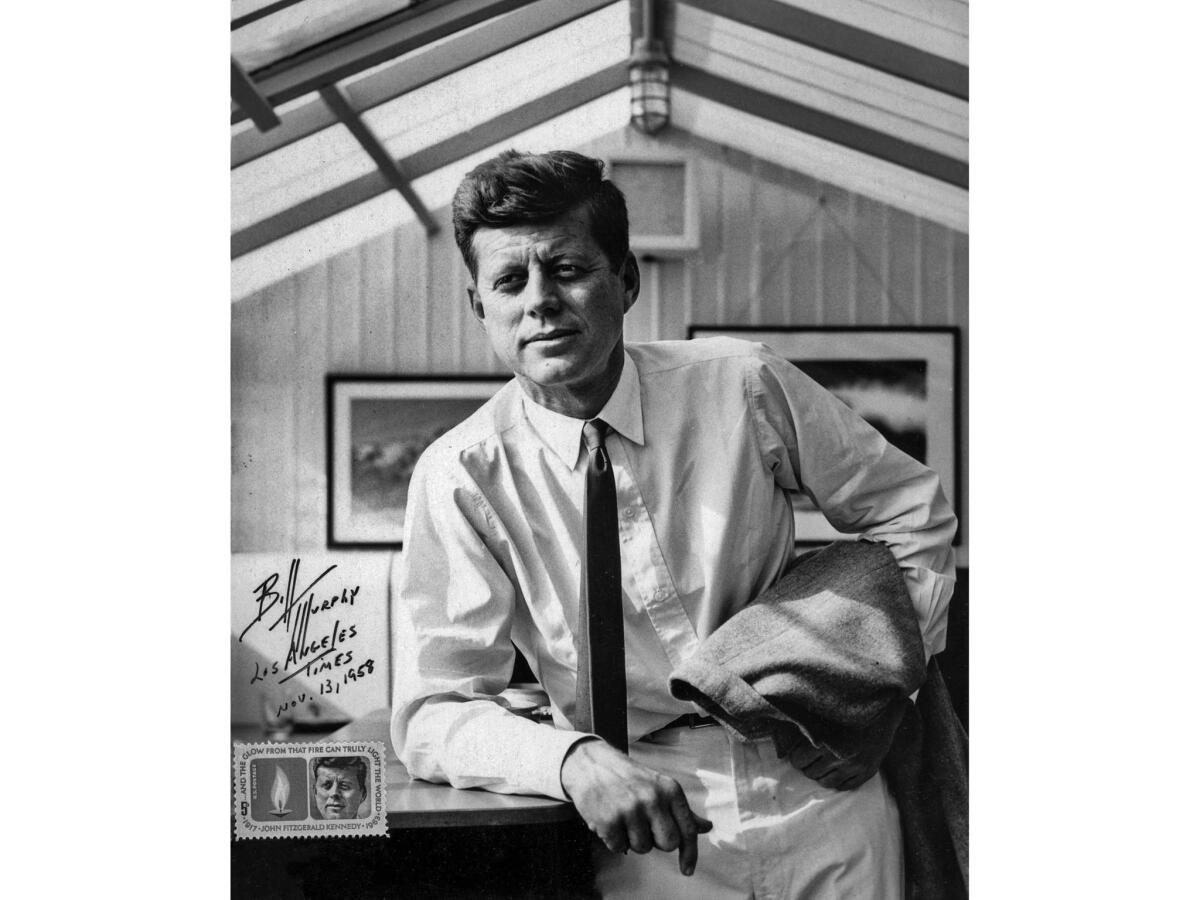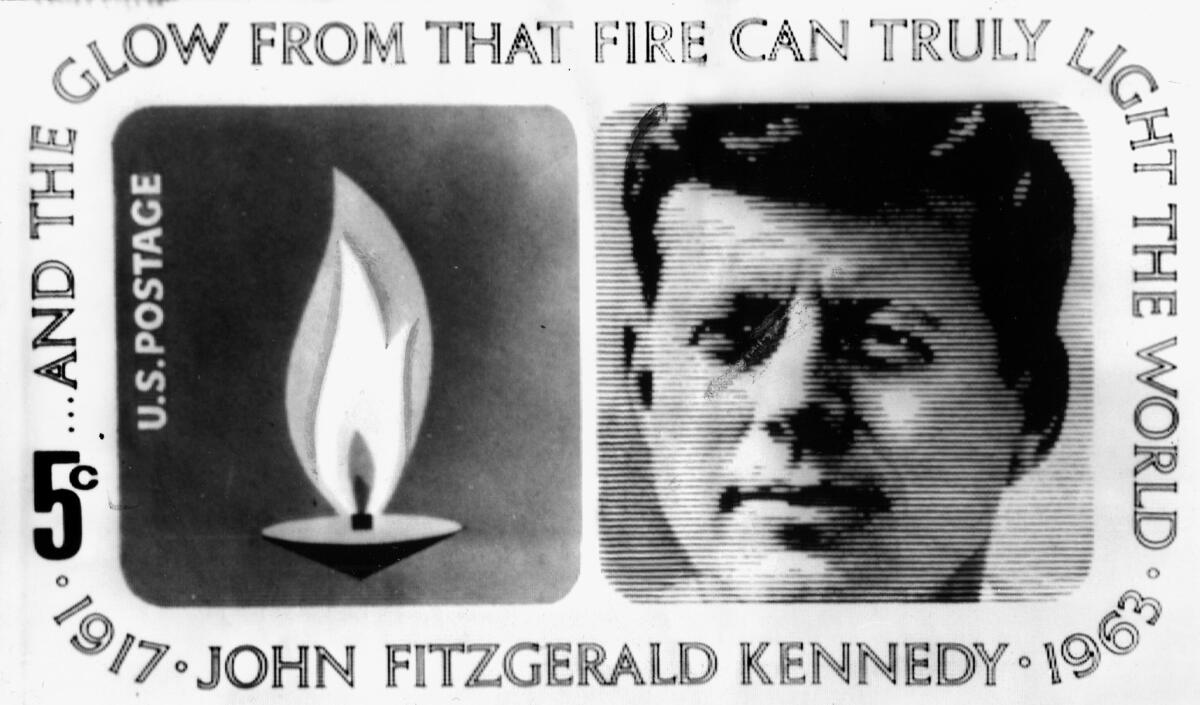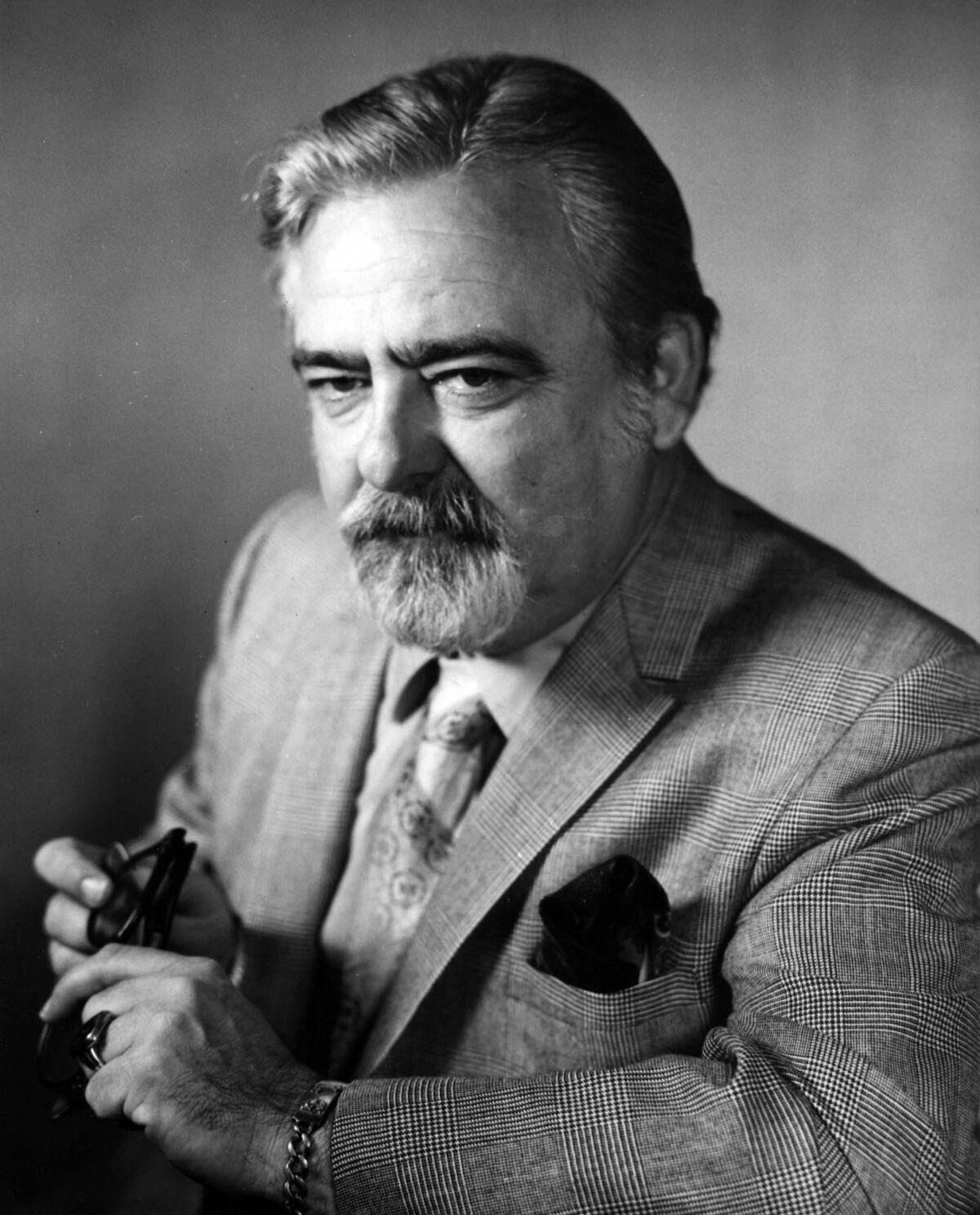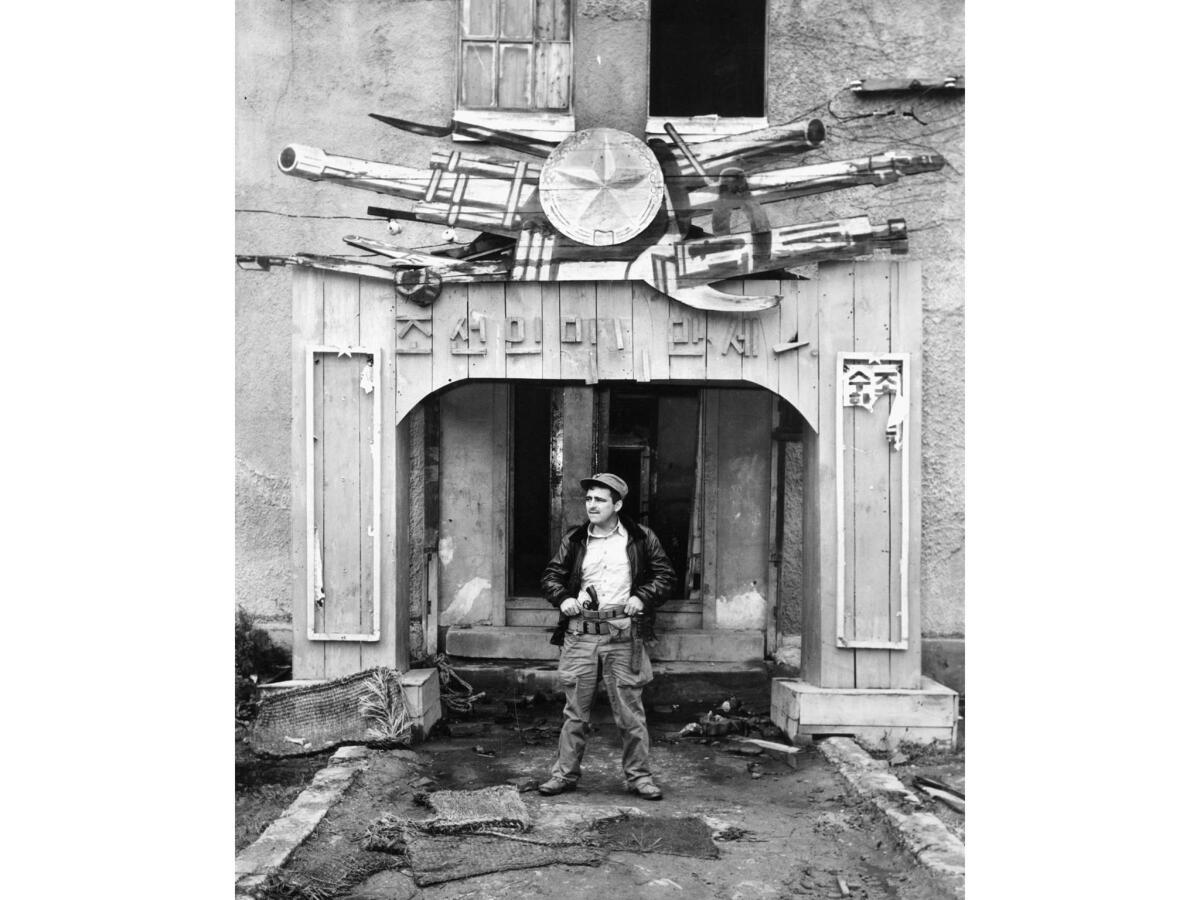From the Archives: 1958 photographic portrait of JFK becomes a postage stamp

- Share via
The photo above was used in 1964 in the first stamp commemorating President John F. Kennedy after his assassination. The Times’ William S. Murphy, who took the photo, autographed the print and placed one of the stamps in the lower left corner.
On May 15, 1964, a story in the Los Angeles Times announced the JFK postage stamp. The commemorative stamp was issued on May 29, 1964.
In a Nov. 21, 2013, Los Angeles Times article, Bob Pool wrote:
The U.S. Postal Service wanted to honor slain President John F. Kennedy, but first it needed Jackie Kennedy's stamp of approval.
That's how a Los Angeles Times photo came to be chosen for the first commemorative postage stamp honoring the fallen president following his Nov. 22, 1963, assassination in Dallas.
The 5-cent stamp issued on May 29, 1964, was based on a photo of then-Sen. Kennedy during a visit to the Santa Monica beachfront home of his brother-in-law, actor Peter Lawford, by Times staff photographer William S. Murphy.
It was an informal portrait, snapped as Kennedy chatted with reporters. It caught him in a relaxed moment, leaning against a table with his sports jacket tucked under his left arm.
Murphy snapped the photo Nov. 13, 1958, as Kennedy was taking a three-day break at Lawford's house after a 17-state campaign swing for Democratic candidates in the Nov. 4 election and the upcoming Nov. 25 vote in the newly admitted state of Alaska.
In an un-bylined story that accompanied the photo, it was noted that Kennedy planned to attend the baptism of his infant niece, Victoria Lawford, the next day.
"I made several pictures of him in the rumpus room of the house, which had a glass skylight," Murphy later wrote of his encounter with the future president. "On this particular exposure, I did not use a flashbulb, as we were beginning to experiment with available light photography — something we do all the time now with 35mm equipment.
"As I recall Kennedy talked for about an hour on domestic and international affairs. None of us bothered to ask him any questions, which is the usual procedure at press conferences. I think we became so absorbed in listening to him talk that we forgot our usual role.
"But I do remember what I told my wife when I arrived at home that evening. I told her I had photographed the future president of the United States."

Although a photographer from the Los Angeles Examiner, Russ Lapp, snapped a similar photo, Murphy's picture remained one of Jacqueline Kennedy's favorites. She asked that postal officials use it on the commemorative stamp.
The Times reported on May 30, 1964, that the Kennedy stamp set a first-day-of-issue sales record with millions snapped up at a rate so fast that some post offices ran out. More than 500 million were eventually printed.
Because 50 years have passed, no one involved in the stamp's release is still employed by the Postal Service, according to USPS spokesman Roy Betts. But records kept by the National Postal Museum in Washington, D.C., show it was designed by Raymond Loewy of the New York City firm Loewy and Snaith, and sketched from the photo by Robert L. Miller, said museum spokesman Marty Emery.
Loewy was paid $500 for the design, which included an image of the eternal flame at Kennedy's gravesite at Arlington National Cemetery and the words "and the glow from that fire can truly light the world."

Murphy was paid nothing for the use of his picture, which was taken as Kennedy listened to a comment from Times reporter Charles Hillinger. In a 1990 article about artists who design postage stamps, headlined "Big Idea on a Small Canvas," Hillinger wrote that the future president had been "looking at and talking to me."
“For millions of Americans, that photograph on the 1964 stamp was a poignant reminder of the popular young president. For me, it captured one of the most memorable moments of my career," Hillinger wrote.
The 5-cent Kennedy stamps remain a collector's item. U.S. Mint sheets of 50 of the stamps are listed on EBay for $12.25, and a books and manuscript shop in Galena, Ill. is selling an original copy of the photo signed by Murphy for $795.
Murphy had joined the newspaper as an 18-year-old part-time clerk filling glue pots in the classified advertising office. He became a full-time mail clerk for the paper in 1940 before joining the Navy during World War II and learned photography during a four-year stint in the Pacific war zone.
He joined the paper's photo staff after the war and was called back to active duty as a combat correspondent during the Korean War. Returning to the newspaper in the 1950s, Murphy authored books about the American Southwest and Mexico and wrote book reviews and articles for The Times in addition to shooting photographs.

Murphy retired in 1988 after a 50-year career with The Times and died in 1993 at age 72.
While the Kennedy stamp brought some measure of fame, Murphy never boasted about it.
"He was a quiet, unassuming person," recalled a friend, George Fry, who worked for 33 years as a Times photographer. "I don't think he ever had a big head."
Murphy did give his friends signed copies of his Kennedy photo. Now retired in Eugene, Ore., Fry said he keeps the picture in a bank safe deposit box.
Mentioned in Pool’s article is Los Angeles Examiner photographer Russ Lapp. Two of Lapp’s Kennedy press conference images are online at the USC Digital Library.
An earlier version of this post appeared on Jan. 19, 2011. Bob Pool’s 2013 article is online.
The biggest entertainment stories
Get our big stories about Hollywood, film, television, music, arts, culture and more right in your inbox as soon as they publish.
You may occasionally receive promotional content from the Los Angeles Times.







